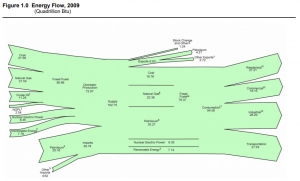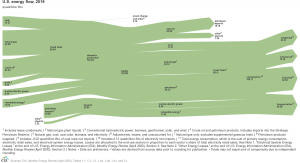In 2006, when I started with MSU Extension, one of the hot economic issues was energy. Energy prices were high (especially for gas and diesel), energy security was a buzz word and there was lots of interest in renewable energy. The US was looking for lower cost energy sources, domestically produced energy sources and more environmentally friendly energy sources. Renewable energy was domestically produced and in most cases relatively more environmentally friendly but often was more expensive. The oil and gas industry was looking for new areas to explore and new technologies to improvement the efficiency of their operations. Consumers and regulators were also exploring ways to be more efficient in our energy usage. Technologies including CFL and LED lighting, improved automotive fuel efficiency, more efficient insulation and heating options were all gaining traction with Americans. In Montana, biodiesel produced from Montana oilseeds was being seriously explored as noted in this news article. The Montana Legislature’s Energy and Telecom Interim Committee examined wind energy. One of Montana’s Rural Electric Cooperative’s (Flathead Electric) started producing electricity from gas collected from a local landfill. I personally contributed to projects exploring the economic viability of net metering wind projects and biodiesel for personal use. Let’s take a look back and see what has changed? (I’ll ignore the events of the past few months that were impacted by CV-19 so that the longer run events can be explored.)

Energy Consumption:
Total energy consumption across the country has been fairly flat for the past 10 years. This is a remarkable departure from the trend of the previous 75 years. The few declines prior to this current no-growth period were only a few years in length and were directly related to an economic slowdown. The reasons for the lack of growth in energy consumption are many but include adoption of energy efficient technologies in buildings, vehicles, electronics, and industrial processes. The decline is also related to the types of industries that comprise the US economy shifting over time from more energy intensive industries to industries that use less energy. Regardless of the factors leading to the lack of growth, the result was certainly not the commonly held expectation a decade ago.


Energy Imports and Exports:
In 2009, net energy imports (energy imports less energy exports) to the US were nearly 23 quadrillion BTUs (QBTUs) which was about 25% of total US energy usage. Over 80% of the imports were petroleum products. Energy independence and concerns about our political relations with our energy trading partners were often in the news. By 2019, the US was a net energy exporter of approximately 1 QBTUs. Few people a decade ago would have predicted that shift to occur and many were predicting imports to rise.
Energy Production:
Advances in hydraulic fracturing technology and the widespread implementation of this technology significantly changed the landscape for US oil and gas production. US oil production has increased by over 125% (14.2 QBTUs) and natural gas production increased by 60% (13.4 QBTUs). Renewable energy technologies also improved over the past decade and energy production from renewable sources increased by nearly 50% (3.8 QBTUs). Coal production declined by about 33% (7.3 QBTUs). Energy production from nuclear power plants was unchanged.
The increase in natural gas production has allowed the US to generate considerably more electricity from natural gas than 10 years ago. The increase in US oil production has largely reduced the quantity of imported oil. The increase in renewable energy production has contributed to both liquid fuels (ethanol & biodiesel) markets and electricity markets (wind and solar). The decline electricity generated from coal has been offset by the increased generation from natural gas and to a lesser amount renewable energy.
Will the next 10 years be just as unexpected as the last 10?

